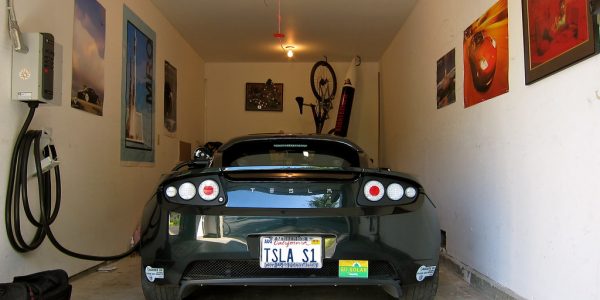What does my house need to charge an Electric Car?

Whether you already own an electric car (EV) or are considering one in the future, when you are looking at new homes it is important to consider what it takes to charge an electric car at home. Depending on how the house is set up, it could limit the speed or cost of installing EV charging.
When you look at a new home it is important to look for two things: Where you plan on parking your car, and where the electricity will come from to charge. From these observations you can estimate the cost to install Level 2 electric car charging and what your options are. See”Other ways to charge” below because you may not necessarily need Level 2 charging capacity at home.
Great charging
Many new homes are built with the ability to charge an electric car. If you don’t see a charger on the wall, take a look and see if you see a wall outlet that looks like a dryer or RV outlet. This is likely pre-wired for you to be able to plug in your current or future EV. Many vehicles such as the Chevy Bolt and Tesla Model 3 come standard with a EV charger that can plug directly into these NEMA 14-50 outlets. You are good to go!
Good charging
If a home has an electric panel within 10-20 feet of where you plan to park, you are in luck! You just need an electrician to come out and connect a charger or 220v outlet for you to plug in. The next step would be to see if there is going to be an additional 32 amp capacity in your electric panel to add the charger. If there is, then an install is as simple as running a new dryer plug and should cost between $400 – $700 to install. A more detailed set of instructions on determining your electricity can be found here.
OK charging
Don’t worry if you have a longer distance to your panel or an undersized panel. Longer electric runs may cost a little more, and an undersized panel may need upgrading. You can still install an EV charger.
Other ways to charge an electric car
Many people don’t bother installing a dedicated EV charger for Level 2 charging. If you don’t regularly drive over 50 miles per day, all you need is access to a regular wall outlet for Level 1 charging. It’s best to have your outlet within 15 feet of where you plan to charge. If your home doesn’t have a garage, you can still run your charging cable from an outlet on the outside of your home.
Another great option is encouraging your workplace to offer charging where you could get some regular miles added to the “tank” and effectively double your daily range.
Don’t forget about incentives
Check with your utility for incentives for EV charging. Through 2021 you can also get a federal tax credit for EV charger installs.
Please reach out to Neil at neil@envirocenter.org or call him at 541-385-6908 x12 for more information.